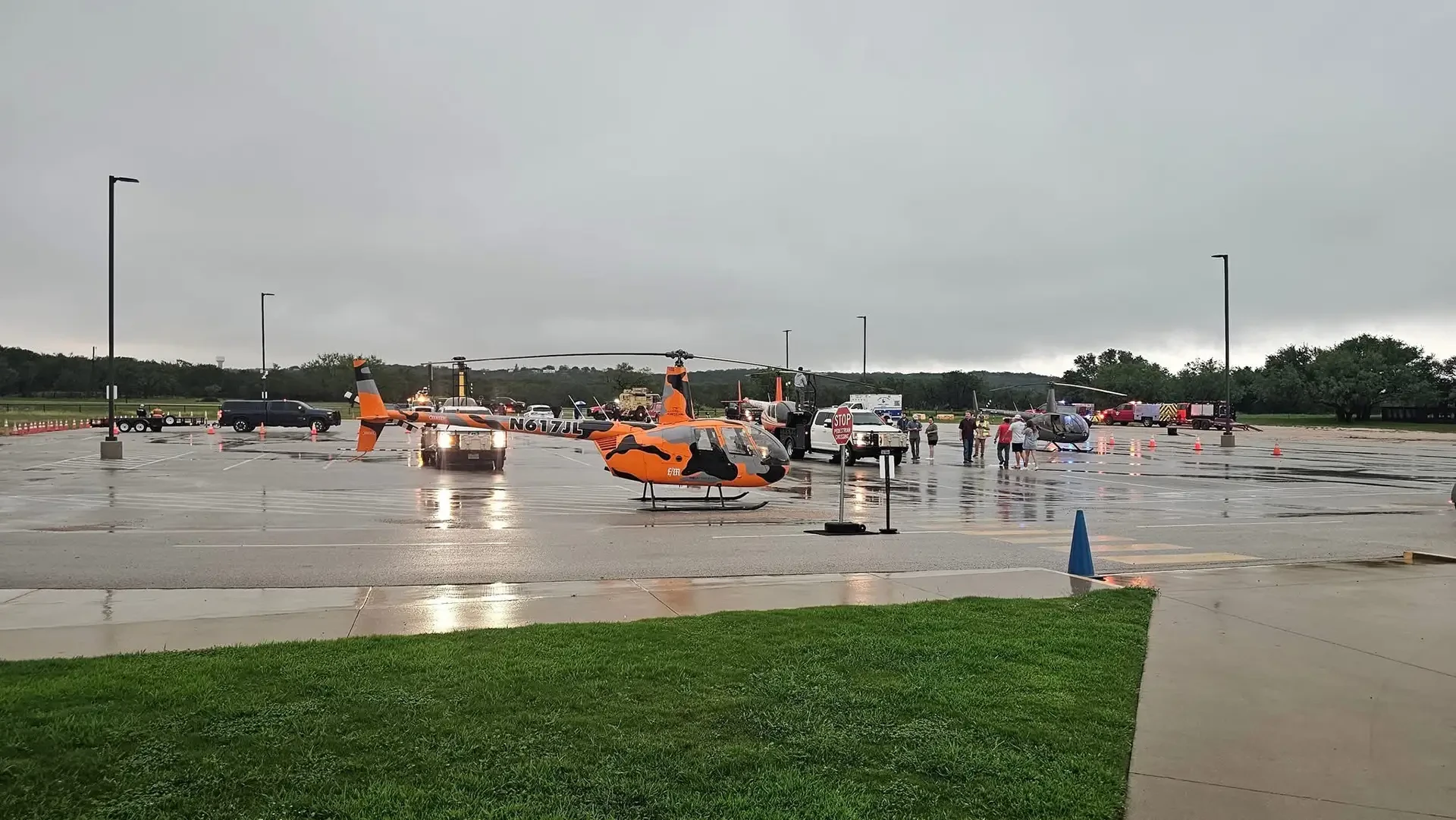More than 130 people have perished, and more than 170 others are missing in a series of deadly flash floods in Central Texas. The Hunt and Kerrville areas along the Guadalupe River, approximately 90 miles northwest of San Antonio, along with other cities and towns in the region, were hard hit by torrential rains beginning on Friday, July 4. The Guadalupe River rose to a record-setting 37 feet, flooding surrounding areas and washing homes, residents, and cars down river.
The day prior, Thursday, July 3, flood watch warnings were issued throughout the day, alerting residents to be prepared for the oncoming storms. In the early morning hours of July 4, the National Weather Service began issuing Flash Flood Warnings as the rain started to fall. The day’s first warning went out at 1:14 a.m., followed by a 3:35 a.m. alert to campers and hikers to avoid creek, stream, and river areas. By 4 a.m., nearly eight inches of rain had fallen in the area. Minutes later, a Flash Flood Emergency was issued for Kerr County, and as the sun rose, high-water rescues began to take place.
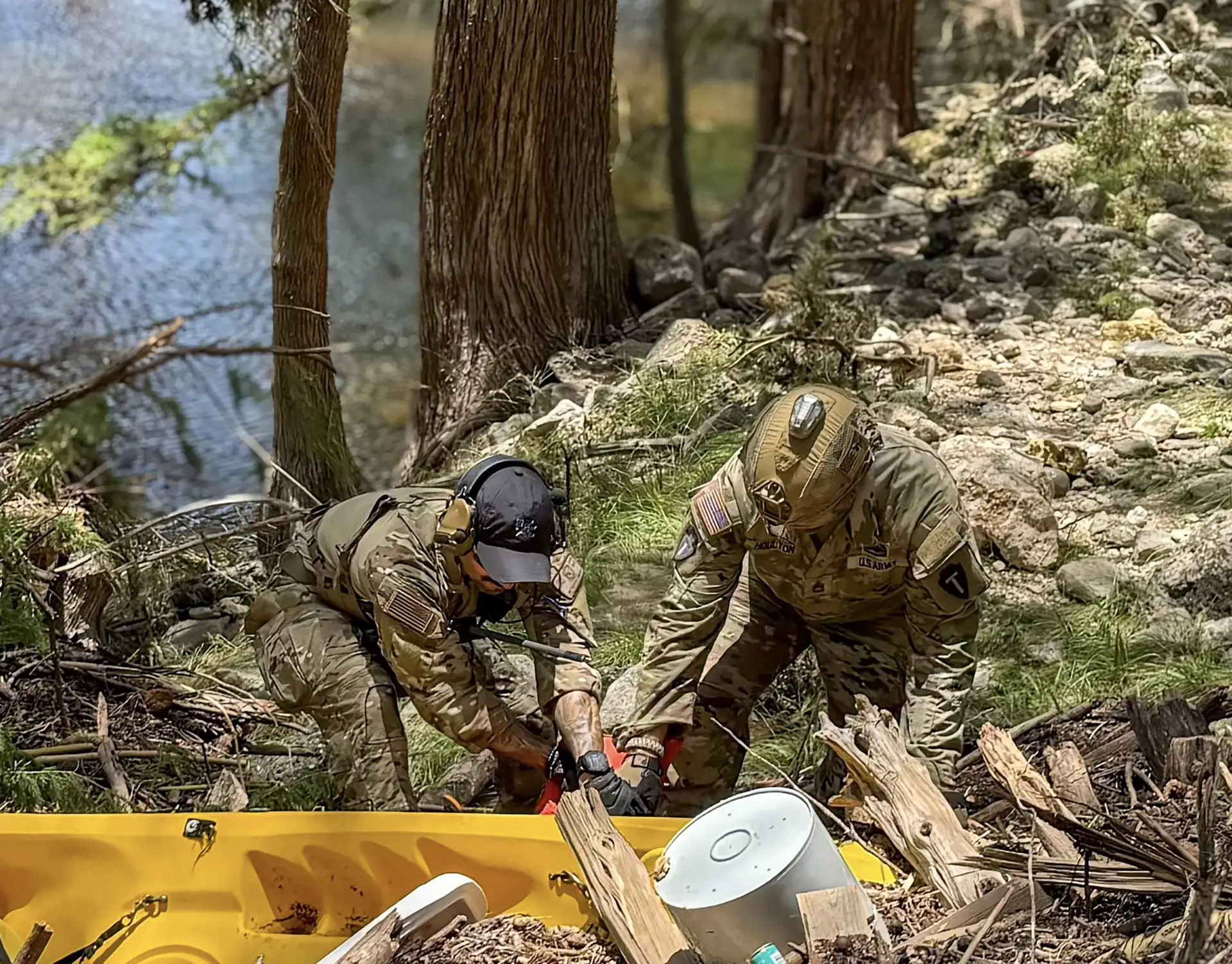
It was estimated that four months’ worth of rain drenched the Hill Country area, and Texas Governor Greg Abbott soon declared 15 counties disaster areas.
Tragedy at Camp Mystic
When rains struck the central Texas area, there were reportedly more than 100 staff members and 557 campers at Camp Mystic, an all-girls Christian camp situated along the Cypress Creek. The camp’s dormitory cabins were located above the creek’s banks, but flood waters quickly rose, sweeping 27 campers and counsellors to their deaths.
Coast Guard Air Station Corpus Christi and Air Station Houston joined the rescue mission, with each dispatching an MH-65E Dolphin helicopter. Air Station Houston also sent an HC-144 medium-range surveillance aircraft. Although based more than 150 miles from Kerr County, MH-65E 6553 was dispatched from Air Station Houston, the flight taking more than seven hours due to severe weather conditions along the route. Upon arriving at Camp Mystic, Coast Guard 6553’s crew of Lt. Ian Hopper, Lt. Blair Ogujiofor, and Flight Mechanic Seth Reeves winched Rescue Swimmer Scott Ruskan down to the ground to coordinate triage efforts. Ruskin, a fully trained rescue swimmer, was on his first deployment to a natural disaster, and he coordinated the evacuation of more than 200 children. The campers were evacuated by U.S. Army National Guard Black Hawk helicopters, which carried 10 to 15 kids and adults to safety per trip.
As of July 6, Coast Guard, Texas Army National Guard, and Air National Guard troops had rescued 525 people, with 366 evacuated by Black Hawk helicopters and 159 rescued by ground teams. In addition to the Coast Guard, 230 Texas Army and Air National Guard troops were deployed to the area. They were assisted by members of the Texas Department of Public Safety and Game Wardens from the Texas Parks and Wildlife Department. Texas Air National Guard’s 147th Attack Wing fielded an MQ-9 Reaper Remotely Piloted Aircraft (RPA) to assist with rescue and recovery observations.
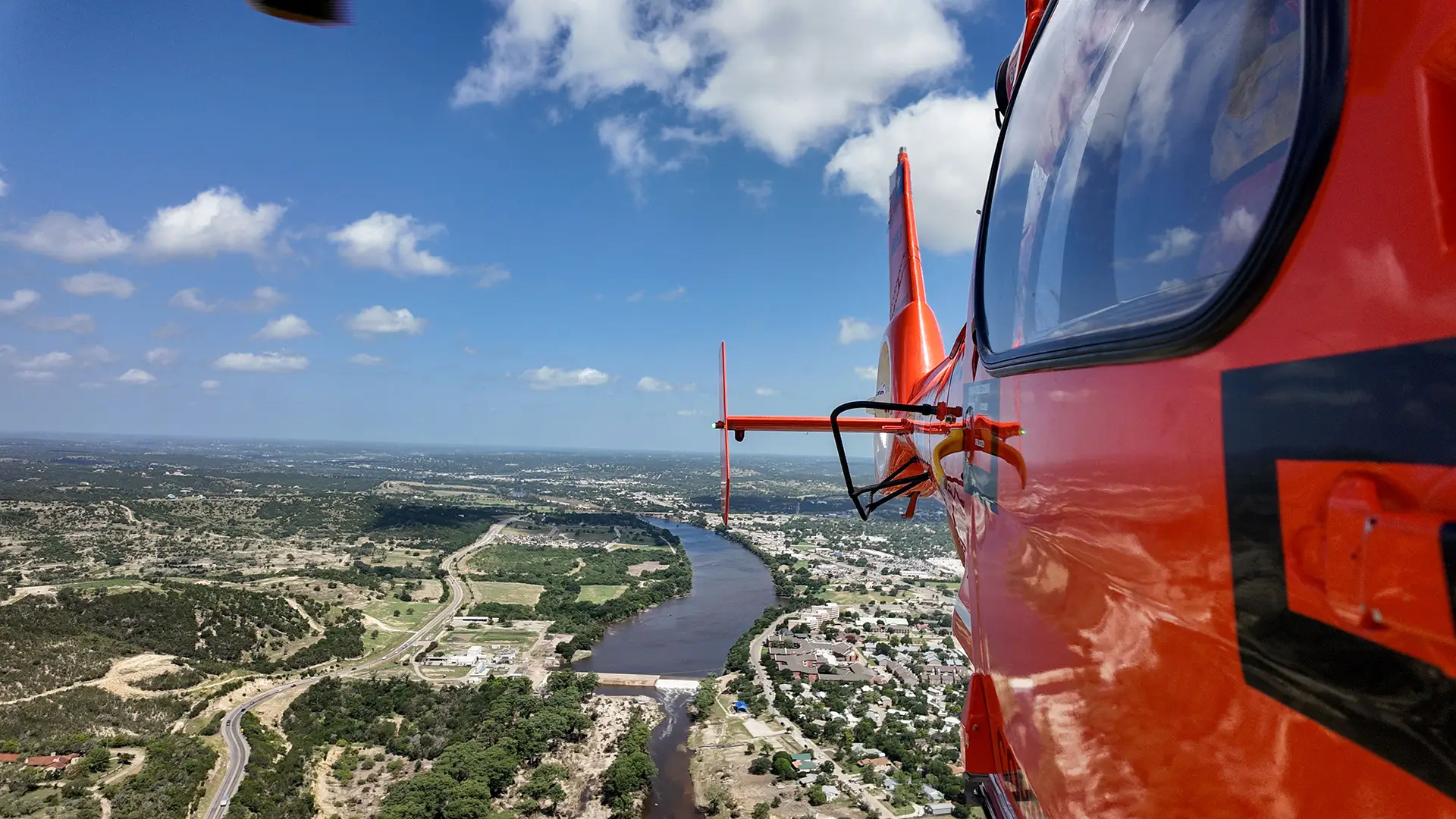
On July 11, Homeland Security Secretary Kristi Noem recognized the Coast Guard crew for their bravery. Rescue Swimmer Ruskan and pilot Hopper were each awarded the Distinguished Flying Cross, while co-pilot Ogujiofor and flight mechanic Reeves were awarded the Air Medal. “In the face of devastating floods in Texas, this Coast Guard aircrew’s courageous actions saved lives and reaffirmed our vital role in protecting American communities,” said Adm. Kevin Lunday, acting commandant of the U.S. Coast Guard.
Ruskan, humbly playing down his actions, was quoted as saying, "Honestly, I’m mostly just a dude. I’m just doing a job. This is what I signed up for, and I think that any single Coast Guard rescue swimmer or any single Coast Guard pilot, flight mechanic, whoever it may be, would have done the exact same thing in our situation. That’s what we were asked to do, and we’re gonna do it. Any one of us, if anyone else was on duty that day, they would have done the same thing as us. We just happened to be the crew that got the case."
Boys’ Camp Flooded
Nearby Camp La Junta, also located on the South Fork of the Guadalupe River, was more fortunate but not by much. Numerous cabins were swept into the raging water; the most terrifying visual from Camp La Junta was a counsellor standing in the doorway of a cabin holding a flashlight as the building floated down river. Fortunately, all inside were rescued, and the Camp La Junta counsellors even spotted a girl from Camp Mystic as she floated by. They were able to bring her to safety, saving her life. Subsequently, the boys’ camp was able to get its campers and staff to higher ground as flood waters surged, gaining in height.
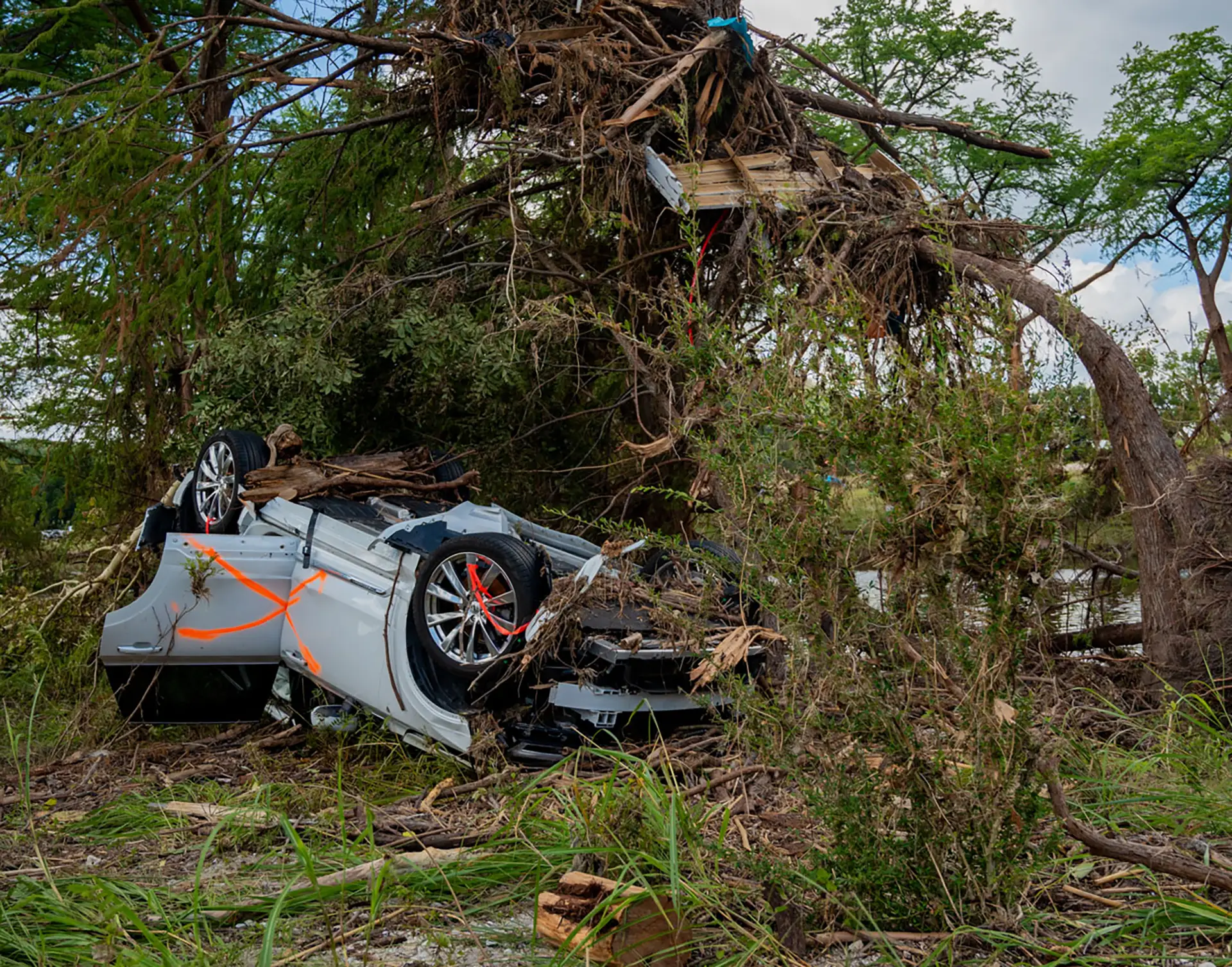
Deluge Continues in Neighboring New Mexico
Neighboring New Mexico also suffered flash flooding along the Rio Ruidoso, which rose more than 20 feet above flood stage. The village of Ruidoso saw more than 200 homes damaged or destroyed by floodwaters and mudflows.
As of July 9, more than 65 swift water rescues had taken place in the area. Flash flooding in this part of New Mexico was exacerbated by last year’s wildfires that have left the ground barren, creating walls of water and mud streaming through the area. Officials estimate that it will take three to five years for the vegetation to recover sufficiently to reduce the effects of flooding and mud flows.
Civilian Helos to the Rescue in Burnet County
While U.S. government agencies had everything handled in Kerr County, to the northeast, first responders in Burnet County needed airlift assets and fast. Operation Helo, a non-profit, public benefit humanitarian organization, coordinates rapid-response volunteer helicopter support in large-scale disasters. The group got its start responding to the disaster surrounding Hurricane Helene that devastated parts of North Carolina in 2024. In support of that disaster relief operation, 33 volunteer helicopters flew out of Hickory Regional Airport in Catawba County, North Carolina, for ten and one-half days. During that time, volunteer helicopter pilots evacuated 454 people and flew in 523 Starlink base stations to enable residents in the area to communicate with emergency services as well as the outside world.
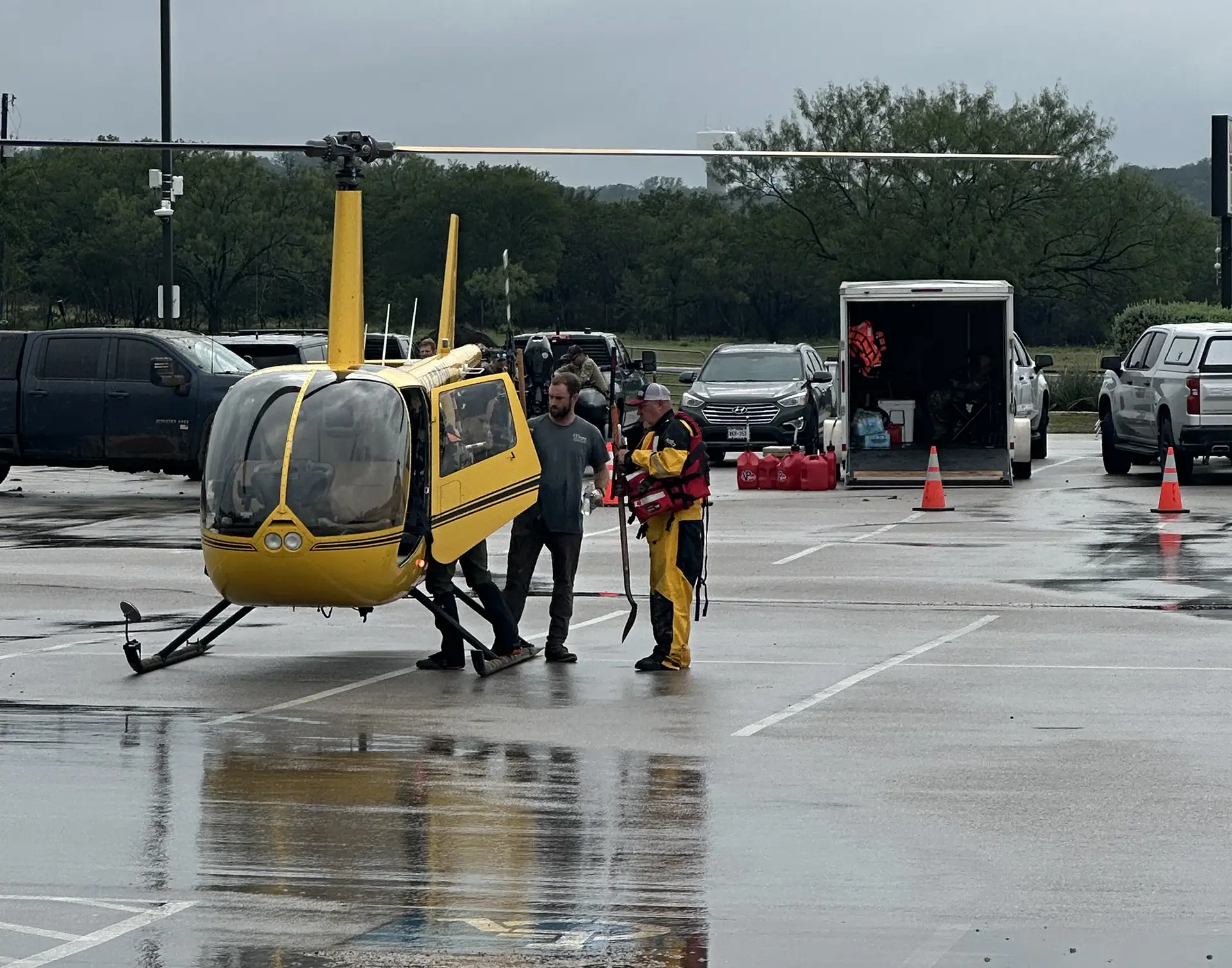
Nationwide, Operation Helo has a network of 150 volunteer helicopter operators, and they are hoping to expand that number greatly in the coming months. Currently, the greatest number of volunteers is represented in the states of Florida and Texas.
The Texas Floods were a time of need, and the volunteers of Operation Helo showed up in force, ready to work. “We got the call on July 4, that there was a possibility we could be needed in Texas,” said Natasha Rodriguez, Operation Director at Operation Helo. “We got that call about 1 p.m., that day, and we took off out of the Charlotte Airport at 6:30 that evening. We landed in San Antonio around 8:30 p.m. local time. Throughout the day were in heavy contact with officials in Kerrville to see what they needed from an emergency management standpoint.”
Officials in Kerrville “were still trying to get a handle on everything, figure out what was needed. The National Guard had arrived, and they also had the army and the military there as well. It was such widespread devastation,” Rodriquez continued. “When we got there, Kerrville officials told us to hold off and see what we would be needed the next day.”
The following day, a Temporary Flight Restriction (TFR) was put in place, closing the airspace to volunteer helicopters as the rescue work was being handled by the military and various government agencies. As a side note, no sooner was the TFR in place than a rescue helicopter was struck by a commercial drone. The helicopter was forced to make an emergency landing, which it did so without incident. There were multiple reports of drones inside the TFR area.
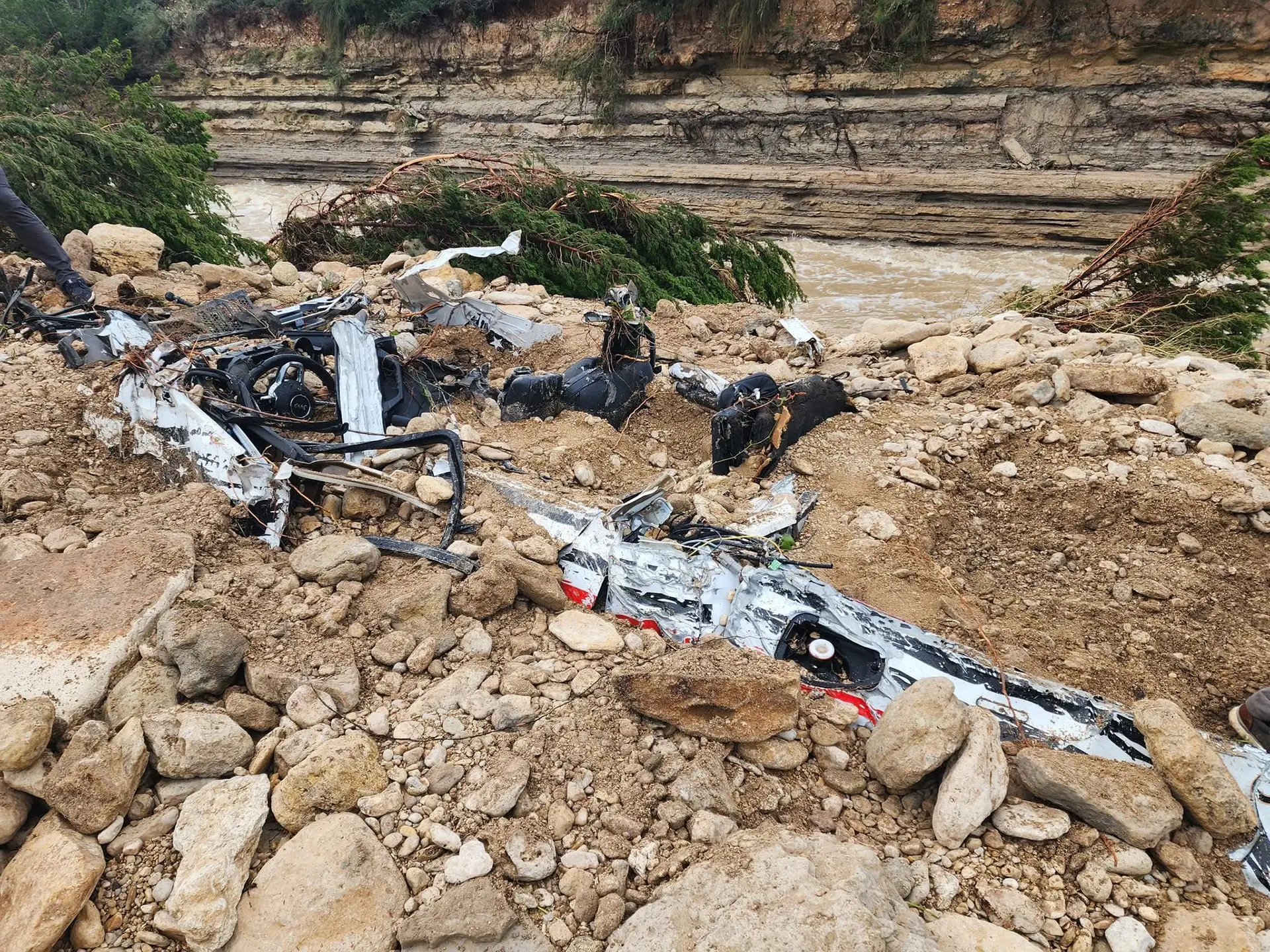
“Then we got a call from Burnett County,” Rodriguez said. “They had 63 people that were missing at that time. They had a campground and a trailer park that got flooded, and their fire chief from one of the volunteer fire departments was missing. He was swept away in the river that morning trying to go to a call. They needed assistance and we were about an hour and a half away. In talking to them, they said, ‘Please come if you can.’ They actually said, ‘Bring everything you've got!” My response was, ‘Hold on, let's take a deep breath because that's well over 150 helicopters in our network, so let's look at the details of where you're flying out of, and what we can do to help. And we determined that anything less than 10 helicopters would probably be a good number for them.’”
Rodriguez was on site in Burnett by 11 a.m. the following morning, and two volunteer Operation Helo pilots were already on scene. Shortly thereafter, missions began to be flown. The Operation Helo volunteer pilots were looking for cars that needed to be searched and spotting people that needed help, whether they were sitting on rooftops or just frantically waving their arms. “When we pulled into the Faith Academy School, below them was a bridge that had been washed out, and that's where one of the campgrounds was located,” Rodriguez described. “There were actually people walking up from being in the floods trying to get to safety, even at 11 o'clock that morning!
“We were very close, and that proved to be extremely beneficial for us because it gave us access to get to these locations quicker. We didn't have a long fly time. Throughout July 5, we basically just flew search and rescue with their fire and police departments. They did locate the chief’s vehicle later that evening.” Unfortunately, he was lost in the floods.

Operators of two Bell helicopters, one a 429 and the other a 505, and eight Robinson R44s volunteered to support first responders in Burnett County. All were local to the Texas area, with the Bell 505, flown by a gentleman named Gary (last name withheld by request) having supported the Operation Helo efforts in North Carolina in 2024.
“The Bell helicopters were great to help us get into larger landing areas, but the Robinsons really played a pivotal role as they were able to get right next down there to the chief's car or whenever we were having to insert search and rescue teams,” Rodriguez said. “That little helicopter is just perfect for that. It can get in places that a lot of the larger Bells cannot.”
During the two-day mission at Burnett County, Operation Helo flew more than 100 missions in support of search and rescue operations in the area. They flew more than 300 personnel in and out, including some members of the National Guard. “We integrated very well with the National Guard as well as everyone there in Marble Falls, all of the EMS, the police, the state highway patrol. So, it worked very seamlessly and everybody did an excellent job,” said Rodriguez.
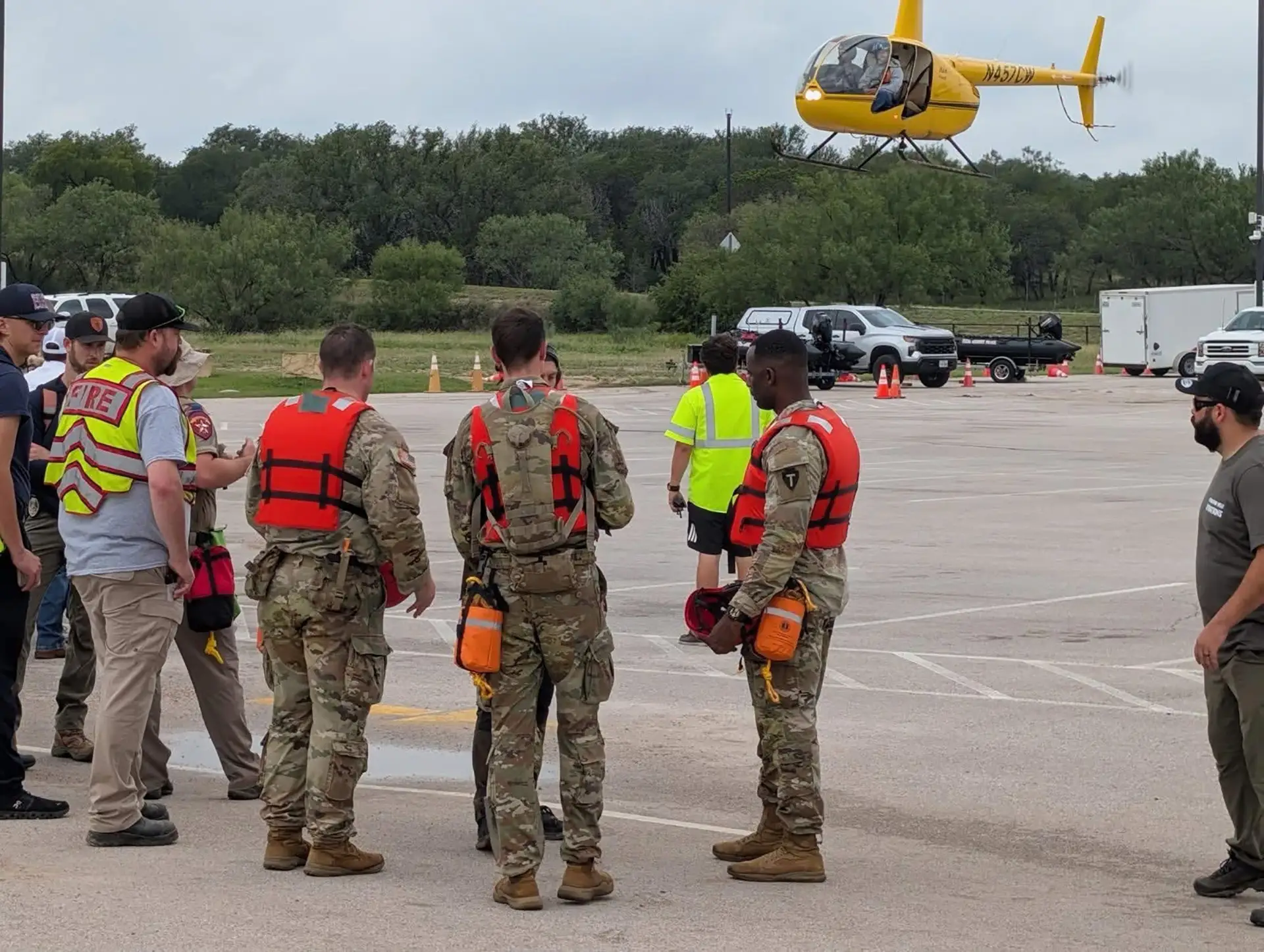
Operation Helo supplied the fuel for the volunteer helicopters, and with a shortage of places to stay, the pilots simply flew home at the end of each day. “We would have definitely paid for hotels or anything like that,” said Rodriguez. “A lot of the pilots said they just wanted to go home to their own beds and hug their families. And that's completely and totally understandable.
Now that the immediate danger has passed, Operation Helo has posted a donation link on its website (www.operationhelo.com), and is now planning to send a supply truck to Kerville and Burnett Counties. Having assisted in previous natural disasters, planning to dispatch relief supplies is a strategic move. At a certain point, disaster victims no longer need clothes or baby supplies, but rather, more specific items to help return some sort of normalcy to people’s lives. Working with local agencies, Operation Helo is coordinating with a few local nonprofits in North Carolina – Appalachian Disaster Coalition and Mountain Strong, to name only two – to pack transfer trailers with goods specifically for the people in Texas.
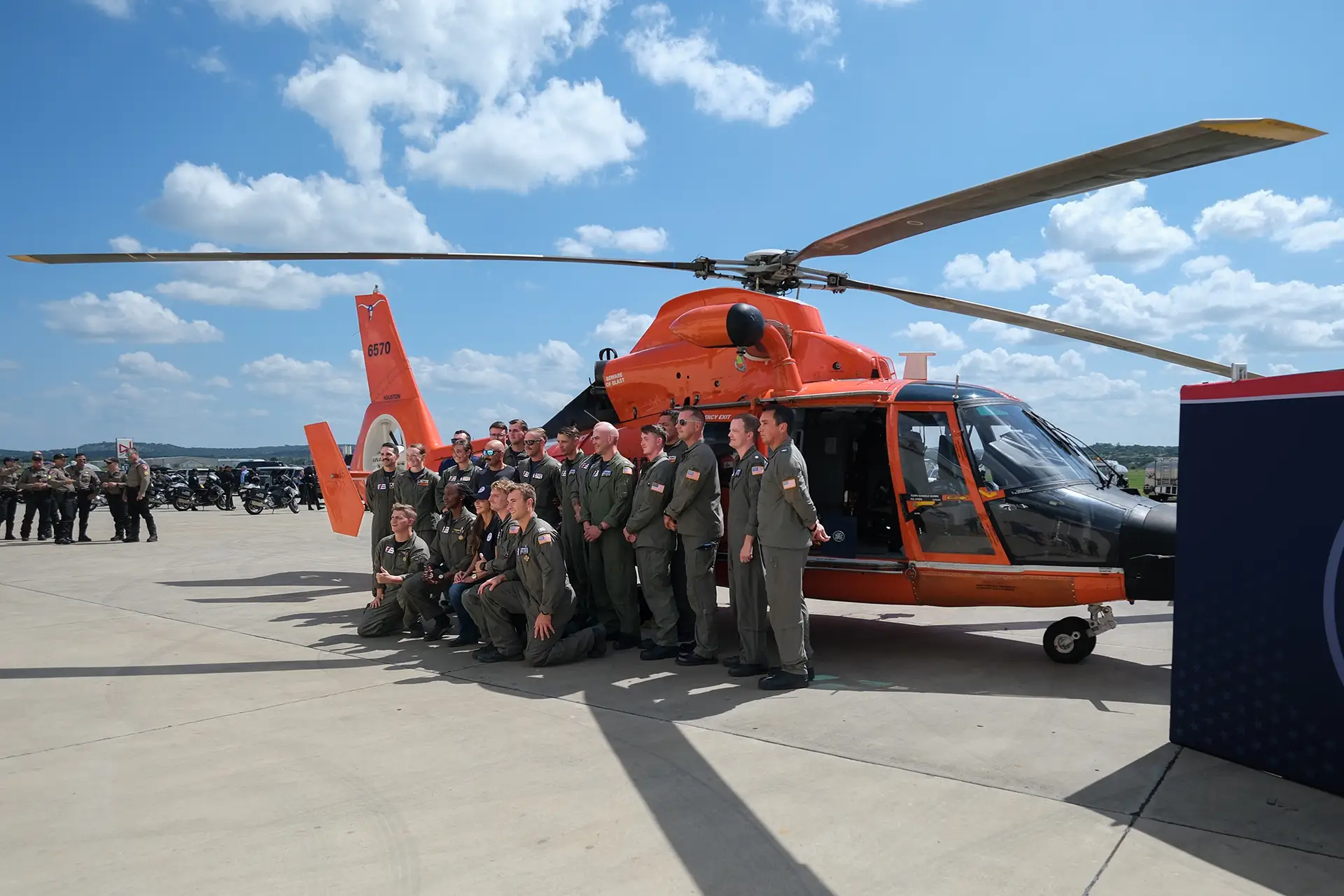
“We hope we are never called upon, but unfortunately it looks like Mother Nature is a little angry these days and we are blessed to be able to help people in their darkest hours,” said Rodriguez. “We hope that we're able to bring just a little bit of comfort in those times. Our pilots are absolutely amazing. They show up, they do everything they possibly can do. They fly safe, they fly responsible, and truly seeing that servant's heart from a volunteer is something absolutely just breathtaking. Whenever you see it in action, people really do want to help. They just need an avenue in which to help through.”
.webp)
 HOME
HOME



